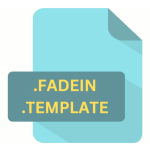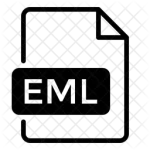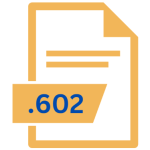.LXFML File Extension

LEGO Digital Designer XML File
| Developer | The LEGO Group |
| Popularity | |
| Category | Text Files |
| Format | .LXFML |
| Cross Platform | Update Soon |
What is an LXFML file?
The .LXFML file extension, also known as LEGO Digital Designer XML File, is a format commonly associated with LEGO digital design software.
This article will delve into the intricacies of this file type, tracing its origin, exploring its history and initial purpose, dissecting its file structure and technical specifications, examining its advantages and disadvantages, and providing insights into how to convert and open .LXFML files across various operating systems.
More Information.
The history of the .LXFML file extension can be traced back to the launch of LEGO Digital Designer in 2004. The software was introduced as a means for LEGO enthusiasts of all ages to design and visualize their own LEGO creations digitally.
The .LXFML file format was designed to store the structure, placement, and properties of virtual LEGO bricks within these digital designs.
Initially, LEGO Digital Designer focused on allowing users to create custom LEGO models, experiment with various brick combinations, and explore their creativity in a virtual environment.
The .LXFML file served as the cornerstone for saving and sharing these creations with others, fostering a vibrant online community of LEGO designers.
Origin Of This File.
The .LXFML file extension is primarily associated with LEGO Digital Designer (LDD), a proprietary software application developed by The LEGO Group.
LEGO Digital Designer is a virtual design tool that allows users to create digital models and designs using a vast library of virtual LEGO bricks and elements. The .LXFML file was created to serve as the native file format for saving and sharing these digital creations.
File Structure Technical Specification.
The .LXFML file is essentially an XML-based file format. XML (eXtensible Markup Language) is a widely used standard for representing structured data in a human-readable format. Within an .LXFML file, various elements and attributes define the characteristics of the LEGO model.
These elements include information about the bricks used, their positions, orientations, colors, and more. Some of the key components of an .LXFML file include:
- Header Information: This section contains metadata about the model, such as its name, author, description, and version information.
- Brick Definitions: Information about the LEGO bricks used in the model, including their type, color, and ID.
- Model Structure: Details on how the bricks are arranged and connected within the model, including their positions and orientations in three-dimensional space.
- Camera Settings: Parameters that define the viewpoint and camera settings for the model’s visualization.
- Step-by-Step Building Instructions: Instructions for assembling the model, generated by LEGO Digital Designer.
- Custom Elements: Support for custom bricks or elements created by users or third-party designers.
How to Convert the File?
Converting .LXFML files (LEGO Digital Designer XML Files) to other formats or making them compatible with different LEGO design software can be challenging due to the proprietary nature of the format. Here are some methods you can explore to convert .LXFML files:
Manual Recreation:
- Time-consuming: Requires manually rebuilding the LEGO model in another software.
- High control: Ensures complete control over the design but can be labor-intensive.
- Models: Suitable for simple models or when no other options are available.
Third-Party Tools:
- External utilities: May offer limited support for converting .LXFML files.
- Variable results: The outcome can vary depending on the tool and the complexity of the model.
- Check online communities: Look for discussions and resources related to these tools for guidance.
LEGO Digital Designer (Legacy):
- Export from LDD: Use the legacy LEGO Digital Designer to open .LXFML files and export them in other compatible formats.
- Supported formats: Common options include .LXF (LEGO Digital Designer Extended Brick) and .LDraw.
- Enables transition: Allows you to move your designs to other LEGO design software more easily.
Consider New Software:
- Explore alternatives: Look into newer LEGO design software like BrickLink Studio, Mecabricks, or Stud.io by BrickLink.
- Enhanced compatibility: These tools often provide more flexible import/export options and better support for various file formats.
- Eases migration: Transitioning to newer software can simplify working with LEGO designs beyond .LXFML files.
Advantages And Disadvantages.
Advantages:
- Compatibility: LEGO Digital Designer is available for both Windows and macOS, providing cross-platform compatibility.
- Preservation of Design Intent: .LXFML files retain the original design intent, allowing users to recreate LEGO models precisely as intended.
- Community Sharing: The format encourages sharing of digital LEGO creations within the LEGO community, fostering collaboration and inspiration.
Disadvantages:
- Proprietary Nature: The .LXFML format is proprietary to LEGO Digital Designer, limiting its compatibility with other software.
- Limited Export Options: Converting .LXFML files to other formats can be challenging, restricting the use of designs in different contexts.
- Software Support: LEGO Digital Designer has been officially discontinued, which may raise concerns about the long-term availability of compatible software.
How to Open LXFML?
Open In Windows
- Download and install LEGO Digital Designer for Windows.
- Launch the software, then go to “File” > “Open” and select your .LXFML file.
Open In Linux
- LEGO Digital Designer is primarily available for Windows and macOS, so running it directly on Linux may require compatibility tools or software like Wine.
- Consider using alternative LEGO design software compatible with Linux, such as BrickLink Studio via Wine or native Linux options like LeoCAD or LDraw tools.
Open In MAC
- Download and install LEGO Digital Designer for macOS.
- Launch the software, then go to “File” > “Open” and select your .LXFML file.
Open In Android
- LEGO Digital Designer was not available as an Android app.
- You may explore third-party LEGO design apps for Android that support importing .LXFML files if they exist.
Open In IOS
- LEGO Digital Designer was not available as an iOS app as of my knowledge cutoff date.
- Investigate third-party LEGO design apps for iOS that offer support for .LXFML files, if available.
Open in Others
- If you are using an operating system other than Windows, macOS, Linux, Android, or iOS, it may be challenging to open .LXFML files natively.
- Consider using compatibility tools, virtual machines, or cross-platform LEGO design software where applicable.
- Be aware that software availability and compatibility can change over time, so it’s advisable to check for the latest options and developments based on your specific operating system.













